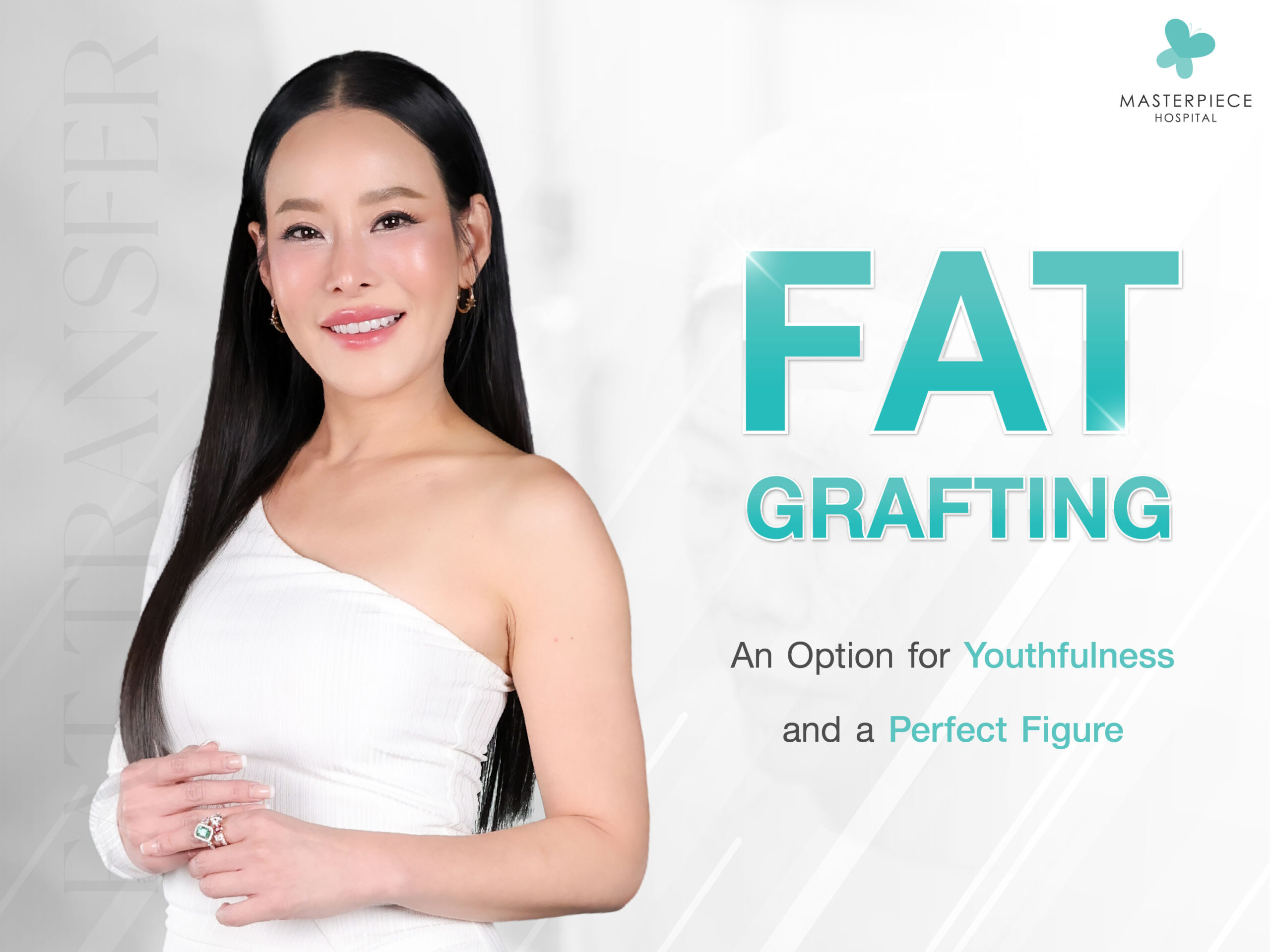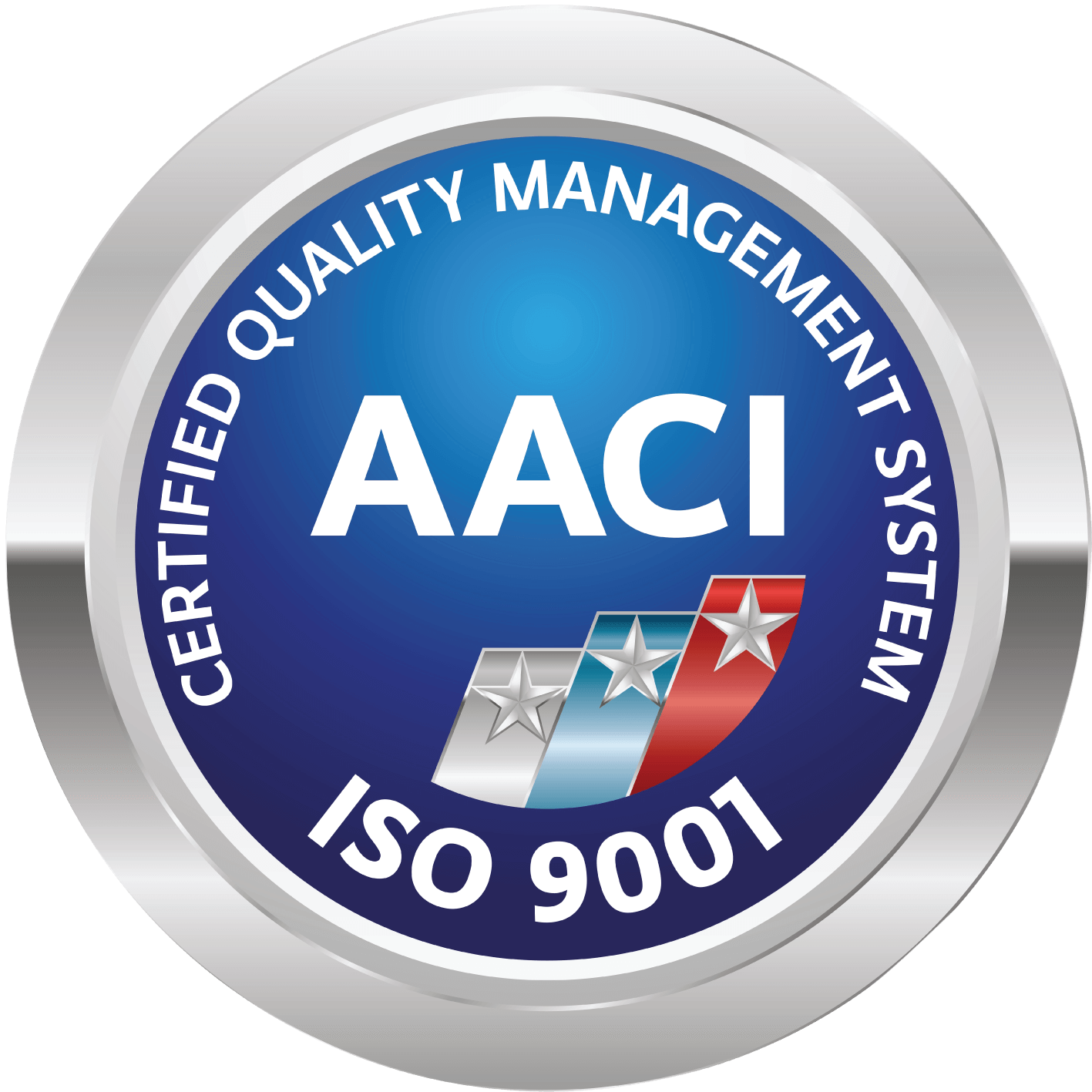Fat Grafting, an Option for Youthfulness and a Perfect Figure.
Fat grafting is a highly popular approach nowadays for facial correction and body contouring. It effectively addresses a wide range of facial concerns while enhancing overall body balance and aesthetics, without the need for chemical substances.
This article will introduce what fat grafting is and provide answers to common questions about the procedure.
What is Fat Grafting?
Fat grafting (also known as fat transfer) is a procedure that involves enhancing the face or body using your fat. The fat used in this process is harvested from areas where it is not needed, such as the abdomen or thighs. The process involves liposuction to extract the fat, which is then purified through centrifugation to obtain high-quality fat cells. These purified fat cells are then injected into the desired areas, such as the face, breasts, or buttocks. This method provides natural-looking results and improves overall appearance. Since the procedure uses your fat, it also reduces the risk of allergic reactions or complications associated with foreign substances. However, fat grafting is a delicate procedure that requires precision and skill. It is recommended to thoroughly research the procedure and consult with an experienced doctor to ensure the best and most satisfying outcome.

Common Areas for Fat Grafting
Popular areas for fat grafting include:
- Face
Facial fat grafting is a solution for concerns such as sunken cheeks, a tired or aged appearance, and fine lines or deep wrinkles that even a facelift may not completely fix. It helps restore confidence by naturally rejuvenating the face. Fat can be grafted to nearly every part of the face, such as the forehead, tear troughs, nasolabial folds, lips, temples, and under the brows, effectively addressing various facial concerns comprehensively.
- Breasts
Fat grafting to the breasts is an alternative to silicone breast implants, ideal for those who prefer not to undergo implant surgery. This method enhances breast size, providing a fuller, more natural look and feel. One of the main advantages of breast fat grafting is the shorter recovery time and reduced risk of complications compared to traditional implants. However, while fat grafting can increase breast volume, the final result also depends on the patient’s original breast structure.
- Hips/Buttocks
Fat grafting to the hips or buttocks is another popular area for fat transfer. It is a natural way to enhance the body’s curves by using one’s fat, which reduces the risk of allergic reactions or other side effects. This procedure helps boost confidence in body shape and contour. Moreover, it is not a major surgery, so the recovery time is relatively short.
Benefits of Fat Grafting
The advantages of autologous fat transfer (using your fat) include:
- Since it uses your body fat, it reduces the risk of allergic reactions and potential side effects.
- Fat grafting involves liposuction to harvest fat, which also helps reduce unwanted fat in donor areas.
- Boosts self-confidence in daily life, both in terms of facial appearance and body shape.
- Provides natural and long-lasting results, as the fat cells integrate into the body permanently.
- Minimally invasive: small incisions, minimal scarring, low blood loss, and only mild swelling or bruising, allowing for a quicker recovery.

Limitations of Fat Grafting
Although fat grafting offers many benefits, there are certain limitations to consider:
- Individuals with low body fat may not be suitable candidates, as there may not be enough fat available for transfer.
- In breast fat grafting, the amount of volume that can be added depends on the patient’s original breast structure.
- Transferred fat may gradually be reabsorbed by the body due to factors like weight loss or illness. In such cases, additional fat grafting may be needed.
- Fat should be injected in moderate amounts and evenly distributed. Injecting a large volume in one area may lead to fat cyst formation.
- Fat grafting is a precise procedure that must be performed by an experienced doctor to ensure optimal and satisfactory results.
Who is Suitable for Fat Grafting?
Fat grafting is suitable for individuals who want to correct or enhance certain areas of the body without surgery or fillers. Examples include addressing sunken cheeks that cause a tired or aged appearance, adding dimension to the forehead, balancing facial proportions, increasing breast size, or enhancing hip contours.
Fat grafting is a medical technique that helps reduce the risks and side effects because it uses the patient’s fat rather than introducing foreign substances or chemicals into the body. This method provides natural-looking, long-lasting results.
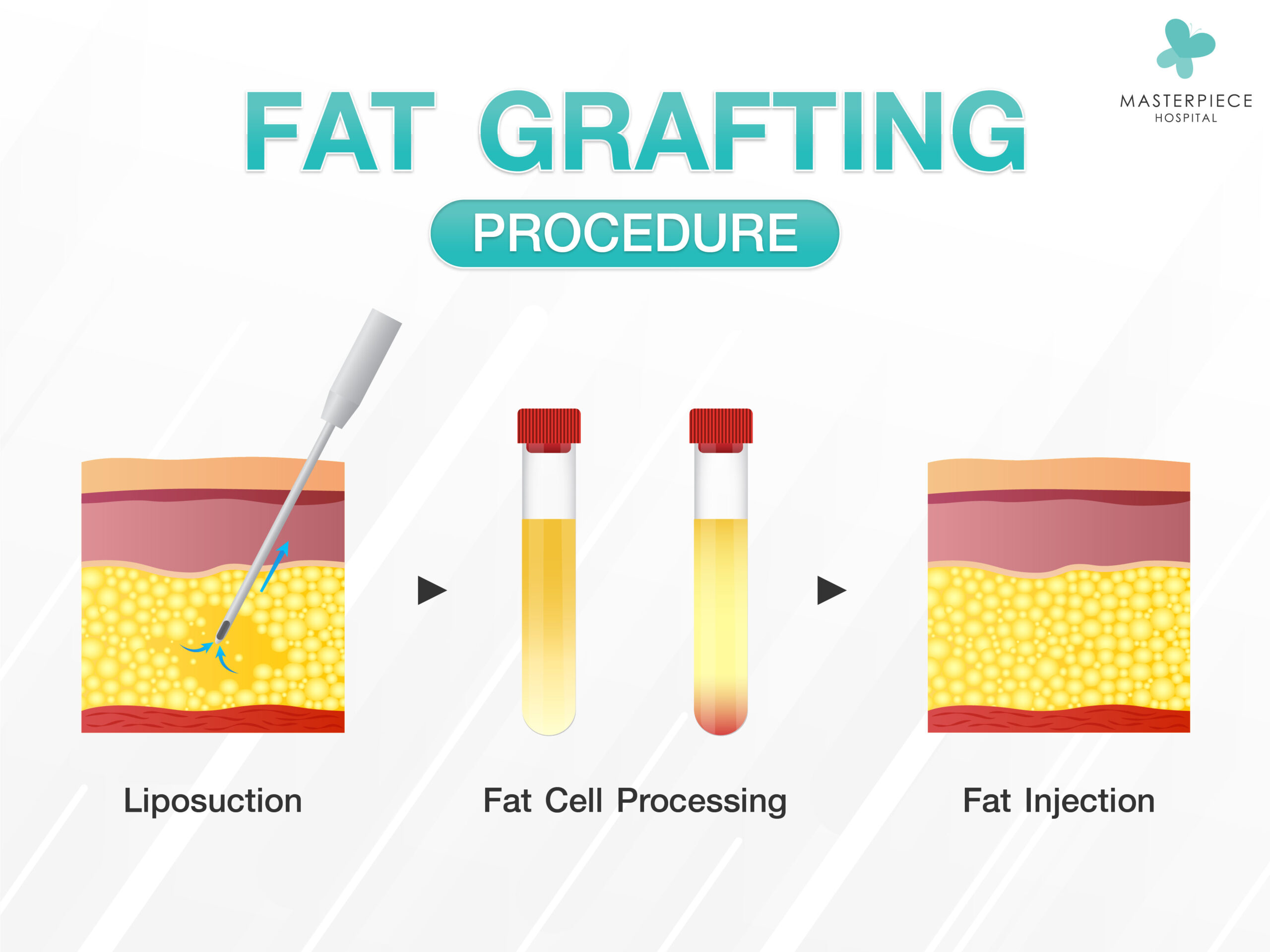
Fat Grafting Procedure
The fat grafting process consists of the following steps
- Liposuction:
In this step, the doctor will use local anesthesia or, in some cases, general anesthesia to help the patient relax. A small incision is made, and fat is extracted from the targeted donor area in the required amount. The incision is then closed with dissolvable sutures.
- Fat Cell Processing:
Next, the doctor selects high-quality fat cells and processes them using a centrifuge to reduce their size and purify them for injection.
- Fat Injection:
Once the fat is ready, the doctor carefully injects it into the desired areas using a micro-droplet technique to evenly distribute the fat and prevent clumping or fat cyst formation.
After the procedure, the patient will rest for about 3–4 hours before being discharged to go home.
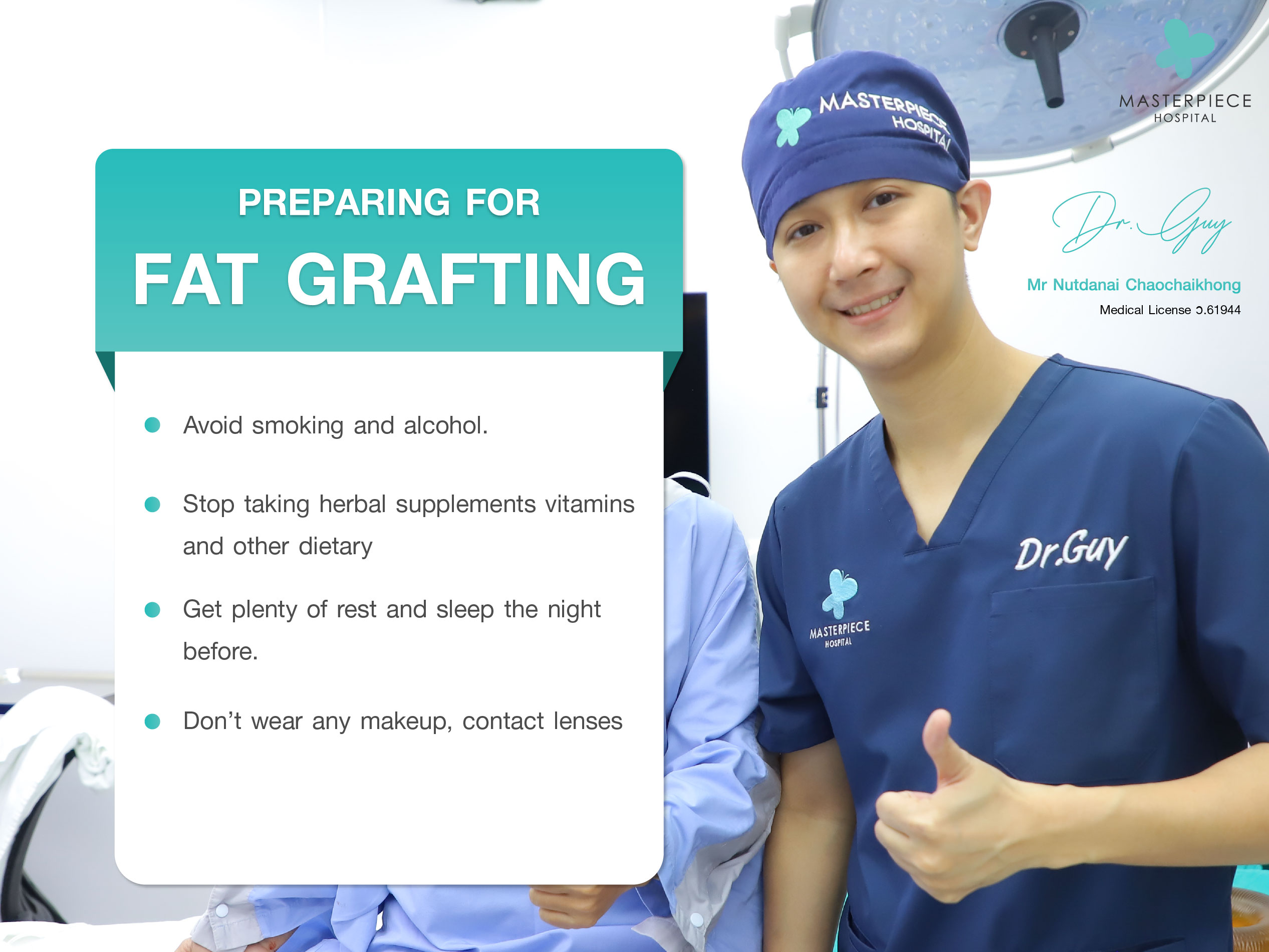
Preparing for Fat Grafting
Proper preparation helps ensure a smooth and successful fat grafting procedure. Here are some recommended guidelines:
- Avoid smoking and alcohol for at least 2 weeks before the procedure.
- If undergoing breast fat grafting, avoid food and drink for at least 8 hours beforehand. For facial fat grafting, eating is allowed but should be light (avoid feeling too full).
- Stop taking herbal supplements, vitamins, and other dietary supplements at least 2 weeks prior.
- Get plenty of rest and sleep the night before.
- Wear comfortable, loose-fitting clothes that are easy to put on and take off.
- Don’t wear any makeup, contact lenses, or jewelry on the day of the procedure.
- Take a thorough shower and ensure the body is clean.
- It is recommended to bring a friend or family member to assist you after the procedure.
- If you feel unwell or experience any abnormal physical symptoms, it is best to postpone the procedure until fully recovered.
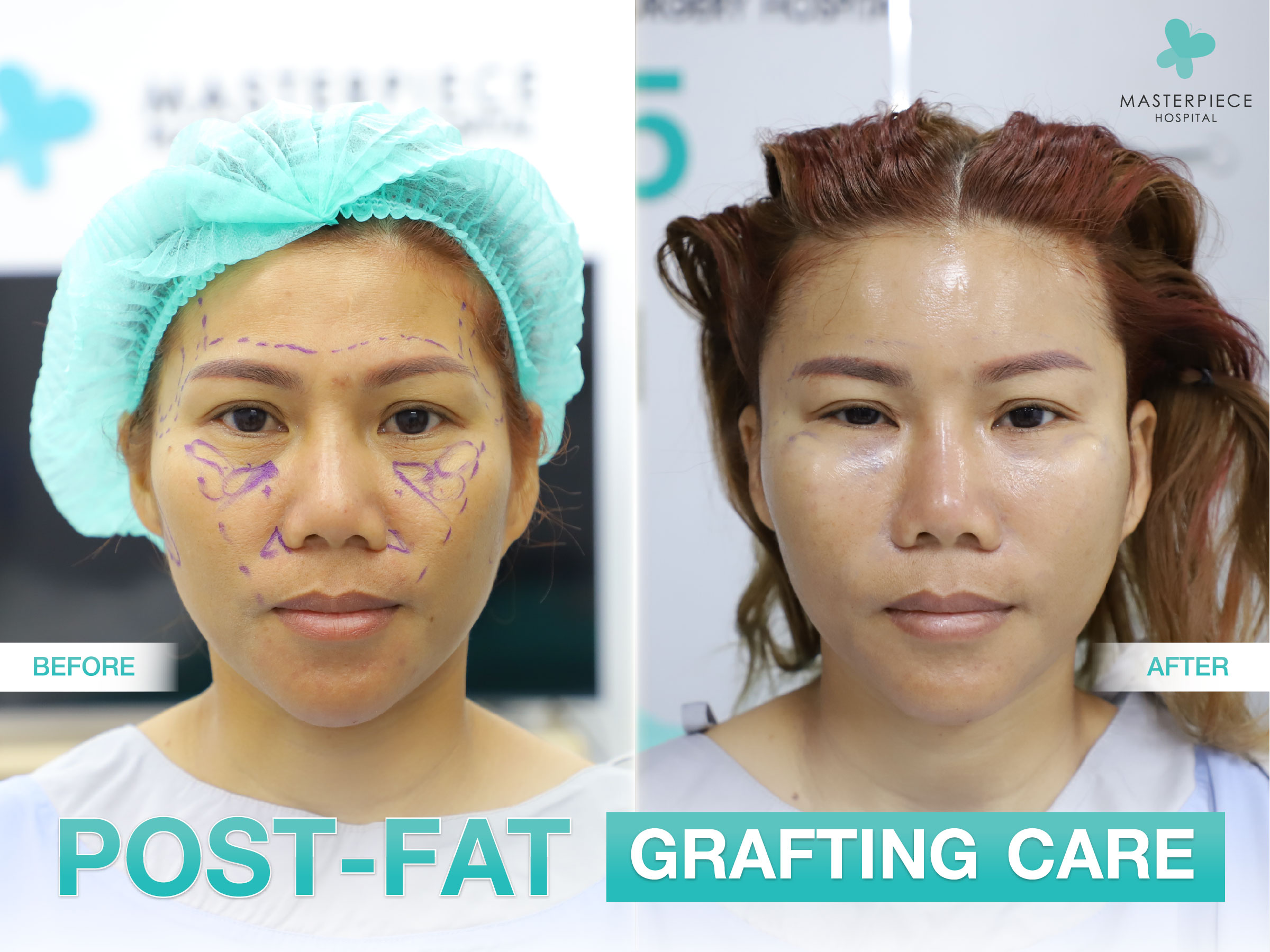
Post-Fat Grafting Care
Proper aftercare is crucial to achieving the desired results from fat grafting. The following guidelines are recommended:
- Take all prescribed medications as instructed by your doctor.
- For facial fat grafting, sleep with your head elevated for the first 3 days. Avoid facial massage and skincare products for the first 24 hours. After that, apply cold compresses to reduce swelling.
- Ensure you get enough rest.
- Avoid alcohol and smoking for at least 1 month.
- For breast fat grafting, keep the incision area clean until sutures are removed, and avoid wearing tight-fitting bras for the first 3 days.
- Keep the incision area dry for at least 1 week; after the stitches are removed, you may shower and apply skincare products as usual.
- Avoid sleeping on your side or stomach for at least 1 month after breast fat grafting.
- Avoid touching or putting pressure on the breasts for at least 3 months.
- Avoid certain foods such as raw food, fermented food, and seafood for at least 1 month.
- Attend all follow-up appointments, and inform your doctor immediately if you experience any unusual symptoms.
FAQ
Summary
Fat grafting is a procedure that effectively enhances facial contours and improves body proportions. Since it uses the patient’s fat, it reduces the risk of allergic reactions and unwanted side effects. For those interested in fat grafting, Masterpiece Hospital offers a team of experienced doctors, advanced techniques, and fully equipped, hospital-grade tools. You can feel confident in achieving natural, long-lasting results. Initial consultations are free of charge. For more information, feel free to contact Masterpiece Hospital directly.
Article by
Masterpiece Hospital Masterpiece Hospital is a leading cosmetic surgery hospital in Thailand and Asia. We are committed to providing accurate and comprehensive information about our cosmetic surgery services.
From initial consultation through post-operative care, Masterpiece Hospital is here to support you every step of the way. Our highly experienced team of doctors delivers comprehensive services using advanced technology, all under the standards of hospital-grade care.
We operate under the international accreditation standards for medical facilities, certified by AACI.
Contact Information Masterpiece Hospital 99/19 Sukhothai Road, Dusit Subdistrict, Dusit District, Bangkok 10300, Thailand
